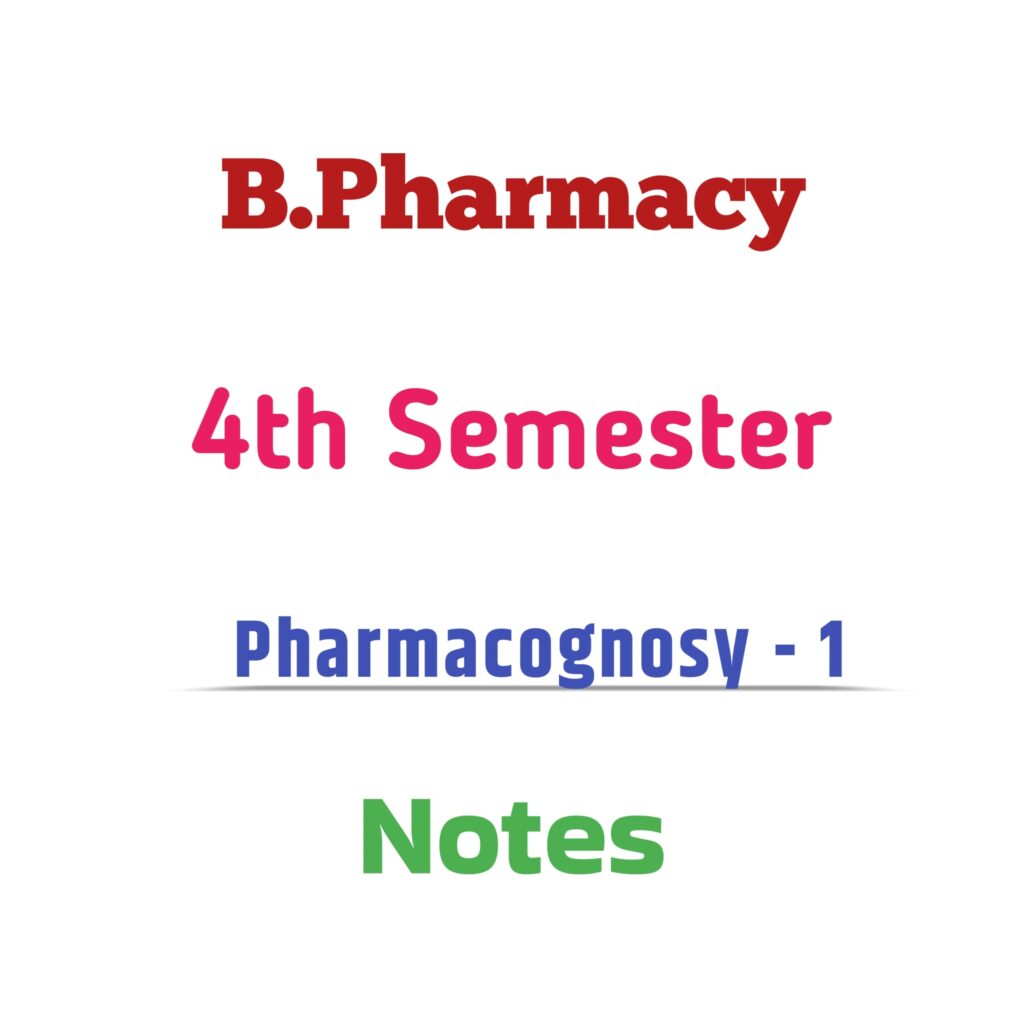Download B.Pharmacy 4th Semester Pharmacognosy-I handwritten notes from carewellpharma.shop. These notes are easy to understand, exam-focused, and perfect for quick revision. Covering all key topics with clear explanations and diagrams, they’re ideal for daily study. Start your smart preparation today with carewellpharma.shop!

Unit 1: Introduction to Pharmacognosy
🔹 Definition, History, Scope and Development of Pharmacognosy
Brief explanation of how Pharmacognosy evolved and its importance in modern pharmacy.
🔹 Sources of Drugs
- Plant Sources
- Animal Sources
- Marine Sources
- Tissue Culture
🔹 Organized & Unorganized Drugs
- Organized Drugs: Cellular structure retained (e.g., leaves, seeds)
- Unorganized Drugs: No cellular structure (e.g., latex, juices, extracts, gums, resins)
🔹 Classification of Drugs
- Alphabetical
- Morphological
- Taxonomical
- Chemical
- Pharmacological
- Chemo-taxonomical
- Sero-taxonomical
🔹 Quality Control of Natural Drugs
- Adulteration
- Evaluation Methods:
- Organoleptic
- Microscopic
- Physical
- Chemical
- Biological
🔹 Quantitative Microscopy
- Lycopodium Spore Method
- Leaf Constants
- Camera Lucida
- Microscopic Diagrams
Download Link ↓
Nirali Publication
Unit 2: Cultivation and Conservation of Medicinal Plants
🔹 Cultivation, Collection, Processing and Storage of Drugs
🔹 Factors Influencing Cultivation
- Soil, climate, altitude, etc.
🔹 Plant Hormones and Their Applications
- Auxins, Gibberellins, Cytokinins, etc.
🔹 Polyploidy, Mutation & Hybridization
- Use in improving medicinal plant quality.
🔹 Conservation of Medicinal Plants
- In-situ and Ex-situ conservation strategies
Download Link ↓
Unit 3: Plant Tissue Culture
🔹 Historical Development
🔹 Types of Cultures
- Callus, Suspension, Meristem, etc.
🔹 Nutritional Requirements & Growth
🔹 Applications in Pharmacognosy
🔹 Edible Vaccines
- Concept, examples, and uses.
Download Link ↓
Unit 4: Pharmacognosy in Systems of Medicine
🔹 Role in Allopathy & Traditional Medicine
- Ayurveda
- Unani
- Siddha
- Homeopathy
- Chinese Medicine
🔹 Introduction to Secondary Metabolites
- Definition & Classification
- Properties & Identification Tests
- Alkaloids
- Glycosides
- Flavonoids
- Tannins
- Volatile Oils
- Resins
Download Link ↓
Unit 5: Study of Drugs of Natural Origin
🔹 Plant Products
- Fibers: Cotton, Jute, Hemp
- Hallucinogens
- Teratogens
- Natural Allergens
🔹 Primary Metabolites
Carbohydrates:
- Acacia, Agar, Tragacanth, Honey
Proteins & Enzymes:
- Gelatin, Casein
- Enzymes: Papain, Bromelain, Serratiopeptidase, Urokinase, Streptokinase, Pepsin
Lipids:
- Castor Oil, Chaulmoogra Oil, Wool Fat, Beeswax
🔹 Marine Drugs
- Overview of novel medicinal agents from marine sources
Download Link ↓
